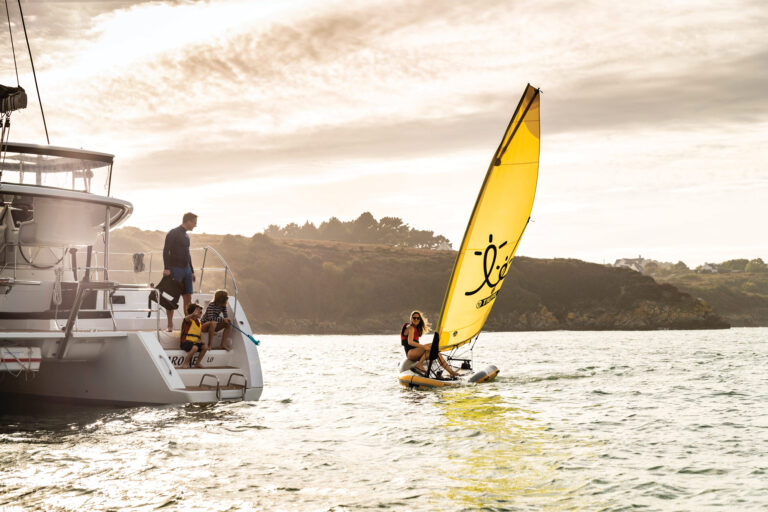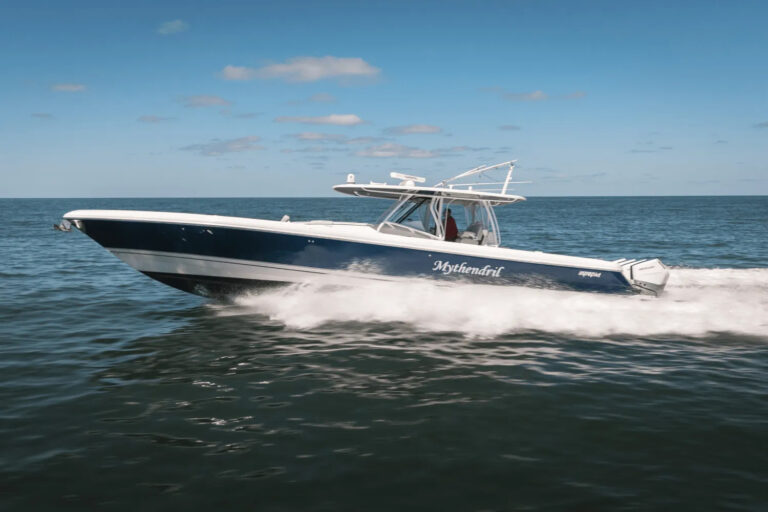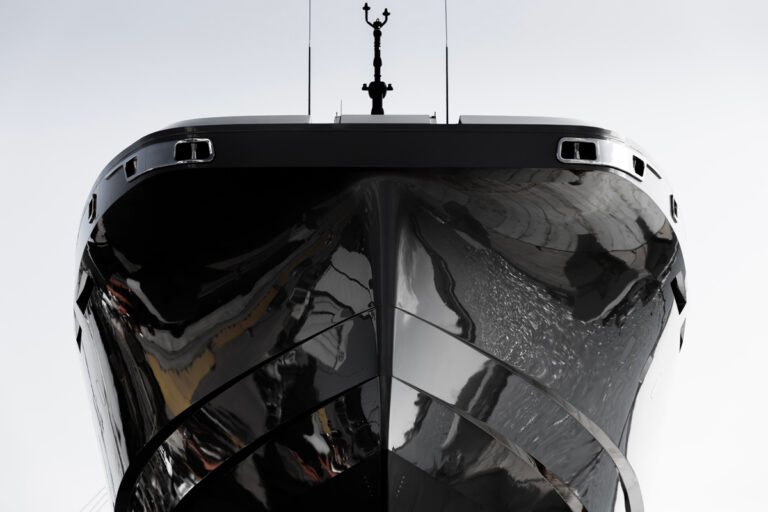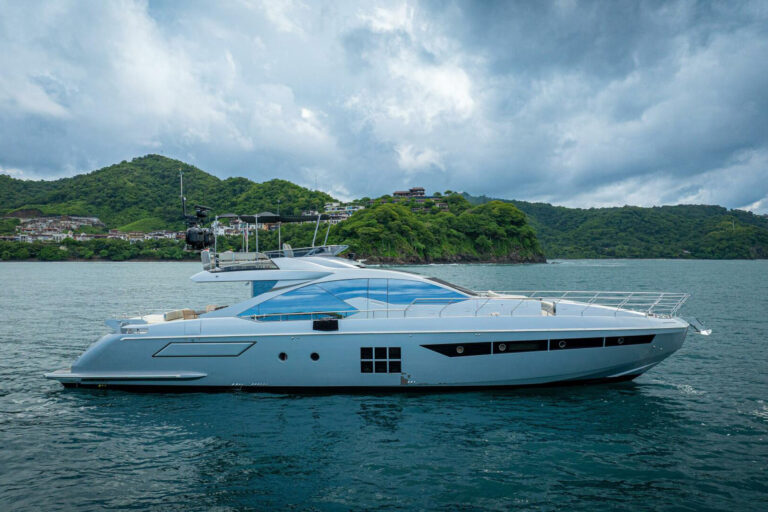
Challenger II
Richard Branson’s Virgin Atlantic Challenger II, a 72′ aluminum monohull powered by twin 2,000-hp. MTU V12 396 TB 93 diesel engines, succeeded in doing what her namesake almost did last year. She beat the transatlantic speed record set in 1952 by the liner United States. Last year, the 64′ aluminum catamaran Virgin Atlantic Challenger, powered by similar MTU engines, sank 138 miles short of the finish at Bishop Rock off England’s Scilly Isles, after reportedly hitting a submerged object.
Branson, whose Virgin Group of Companies includes publishing, recording, video, computer software, film, and cable TV firms, as well as Virgin Atlantic Airways, claims the historic Blue Riband for Challenger Irs time of 3d, 8h, 31m from Ambrose Light to Bishop Rock. United States had completed the crossing in 3d, llh, 20m in 1952.
In 1935 British MP Harold K. Hales donated an ornate, four-foot high, gold-plated silver trophy to be awarded to the “ship making the fastest crossing.” That year, the French liner Normandie won the riband and the trophy; in 1936 and again in 1938 Cunard’s Queen Mary was the Winner.
Then in 1952, on her maiden voyage, United States set the record which, for passenger liners, still stands today. United States Lines, Inc., officially transferred the Hales trophy to the Merchant Marine Museum at Kings Point, N.Y., in the 1970s.
Although the Virgin Group had hoped to win the Hales trophy with this new record, Museum officials demurred, on the grounds that the deed of trust mentions that any attempt out of the ordinary, especially one entailing risk to passengers, would be excluded. The Museum proposes that a new trophy be established for oceangoing powerboats.
(There is no actual “riband,” but the vessel holding the record is entitled to fly one” from the masthead, and in the old days it could really improve the fortunes of a steamship company.)
Challenger II was designed by Sonny Levi and Peter Birkett, and her drive system, with surface-piercing, five-bladed propellers, was the work of Levi. She was built in England, by Brooke Yachts Ltd. at Lowestoft, Suffolk. Fuel capacity being a major consideration in any attempt by a small powerboat to cross the Atlantic, Challenger II was fitted with four main fuel tanks amidships, each of 3.13 tons capacity, and she carries a trimming tank in the bow of 1.2 tons capacity.
Somewhere along the line, Challenger II developed a problem with water in her fuel, and crew members worked below in less than ideal conditions to keep the filters free. Eventually, Challenger II asked the Royal Air Force for help, and an RAF Nimrod dropped new ones to the boat on a “routine training flight.” During the second refueling stop, crew members again found water contamination and decided to offload the fuel and take on a new load. The maneuver cost Challenger II about seven hours.
That could have been crucial. After the third refueling stop they encountered heavy headwinds and seas, and the by-now-exhausted crew (no one had slept in nearly three days) began to doubt that Challenger II could beat the liner’s time. After a minor change in course to pick up speed and minimize the effects of headwinds and seas, however, the adrenaline began to flow, and Branson sent a radio message estimating his chances at 50-50 and expressing his wish that the Scilly Isles could be moved a bit to the west.
In the last miles to the finish the crew members who had been aboard for the 1985 sinking became acutely alert to the possibility of hitting debris in the water, and all hands kept a wary eye forward. As they approached Bishop Rock Branson began a count-down on his radio-“50 yards, 40, 30, 20, 10,” then “I am glad to say that the Blue Riband returns to Britain!”
The crew of Challenger II included, in addition to Branson, round-the-world singlehander Chay Blyth as “senior crewman and decision maker,” Steve Ridgeway, project manager of last year’s challenge, navigator Dag Pike, a British journalist, Peter Downie, chief engineer, and BBC’s Peter Macann.
This article first appeared int he October 1986 issue of Yachting.









